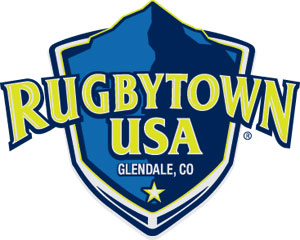
by Mark Smiley | Nov 19, 2018 | Glendale City News
by John Arthur
Writer for and on behalf of the City of Glendale

Infinity Park Event Center is no stranger to orchestrating talent and production during events, but is now conducting its own Glendale Throwdown Showdown Talent Show. (Photo by Seth McConnell)
The Infinity Park Event Center will host a talent showdown this December, celebrating a decade of elevated events and bringing three nights of exceptional entertainment to the Front Range. General Manager Bobbi Reed says that while the landmark anniversary is certainly significant for the venue, the Throwdown Showdown is less about the Event Center’s 10-year birthday and more about producing an in-house event that will not just showcase the venue itself, but also provide exposure to a broader audience: “We wanted to do an event here that we produced, since typically we’re acting solely as a venue. We wanted to build on the brand that we’ve cultivated in the last 10 years,” she said. “This gives us an opportunity to expose the Event Center to a different audience — maybe folks that haven’t been here for a non-profit fundraiser or a corporate meeting or even a rugby game. It gives us a chance to expand our exposure; and doing that through something that is entertaining and fun is good for us and the audience.”
Working with Imprint Events, a national event planning organization with offices in Colorado, Las Vegas, and Florida, Infinity Park’s Talent Showdown will take place December 10-13, capitalizing on the same competition model as that of the seemingly endless popularity of recent television programming like American Idol, The Voice, America’s Got Talent, and others. Imprint organizes events for hundreds of clients annually, and has connections to the high-end talent, recruiters, and promoters that will make the year-end event at Infinity Park a smash for audience members. Reed notes that recruiting call-outs began in early November, and are open to any number of disciplines, ranging from dance troupes to comedians, magicians to bands — among others.
The talent shows themselves will be held in Infinity Park Events Center’s 8,600 square foot International Ballroom, a space with accommodations for any number of performance types. In addition to elegant venue space, the ballroom includes state-of-the-art audio-visual capabilities, including unique 360-degree surround screens, LED lighting, and in-house audio production. With capacity for 1,200 guests, there is never a bad seat in the ballroom. Reed expects that the Talent Showdown will likely become an annual event, and that the multi-day organizational model is designed specifically to build excitement for a crowd that might not typically find themselves at Infinity Park: “It’s all about spreading the brand. We don’t typically produce events, we’re more like real estate for rent, so this is an opportunity for us to put something on that will reflect positively on Infinity Park, on Glendale. This is something that we want to do for many years,” she said. “This is a chance for people to come and do something fun. It gets lots of people in here to see something different. We’re expecting some top-notch performers: the entertainment won’t be just the competition, but the acts themselves.”
Competition will consist of nine unique preliminary acts on each of the opening nights, with audience members deciding finalists via a mobile app designed specifically for the event. Ticket sales launched in early November, and everyone interested can visit the Infinity Park Event Center website to purchase. Multi-night tickets are available for a special rate. What’s at stake for participating talent contestants is considerable. Exposure through the wide-ranging web and social media reach of Infinity Park is perhaps the largest draw, but the likely presence of recruiters and talent scouts will only further that chance at exposure. All contestants selected to compete on finals night will be awarded nominal prizes, and the top three performers will receive additional prizes, some including cash.
Guests have a lot to look forward to. In addition to 18 separate acts over the first two nights, an additional showdown for the finals, exposure to regional talent, and available food and drink at one of Colorado’s premier entertainment venues, first-time attendees will get to experience three evenings of fun at Infinity Park Event Center. For a closer look at what Infinity Park has to offer, for updates on the talent participating in December’s Throwdown Showdown, and to purchase your tickets for the event, visit http://infinityparkeventcenter.com.
Please send audition tapes, bios and photos to auditions@imprintgroup.com. Questions? Call 303-623-1492 for more information. Application deadline Wednesday, November 21.

by Mark Smiley | Nov 19, 2018 | Editorials
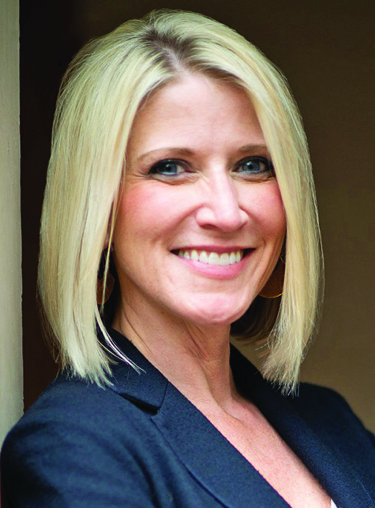
Jamie Giellis
The 2018 statewide elections in Colorado are over. While a blue wave may not have occurred nationwide it certainly did happen in the Centennial State. Republicans not only didn’t win the governorship it lost all statewide offices it held including Attorney General, Secretary of State and Treasurer by wide margins. In Denver all the sales tax hikes were approved as prognosticated in our August 2018 editorial. Statewide the voters shot down new taxes for education and roads although Denver voters likely would have approved both.
We Denverites love our taxes, perhaps reflecting the fact that Denver is home to a very significant number of federal, state and local employees. But we also demand value for our money which many feel we are not getting from our governing city government. Neighborhoods are being destroyed with inappropriate and endless high-density projects, parking downtown has become an arduous chore at times and our roads are increasingly jammed with no relief in sight.
It would appear that many citizens of Denver have had it with Michael Hancock who is viewed as a clueless puppet of high-density developers. The publicity of the mayor’s sexual harassment of police officer Leslie Branch Wise, and his use sub silencio of taxpayer money to pay her off, has been the last straw for many in the city.
Four years ago, not a single person qualified for the ballot to oppose Hancock’s re-election. The situation has dramatically changed today with at least three highly qualified candidates willing to take on his Honor. Last month we identified two of those individuals — Penfield Tate and Lisa Calderon. Since then another highly qualified candidate has entered the ring — Jamie Giellis.
Giellis, age 41, is the president of the River North Art District. She has b
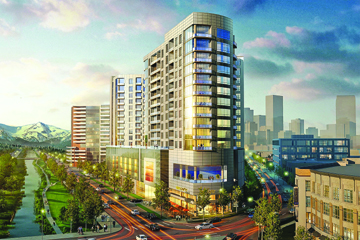
Large scale apartment project on Speer Boulevard.
een identified by The Denver Post as an important force in the development of RiNo, South Pearl Street and the Golden Triangle in her role as founder of Centro which specializes in urban planning.
Urban planning is exactly what has been sadly lacking for the last eight years as can be seen by the virtual destruction of what was one of Denver’s most scenic roadways — Speer Boulevard. Massive condo and apartment buildings crowd the roadway with no setback and totally devoid of any open areas and trees.
As Giellis correctly noted: “A broad vision for Denver is missing and the current mayor has been responding to, and not necessarily planning for, all the issues that come along with quickly growing urban areas.”
As far as we are concerned the more qualified candidates for mayor the better. Under Denver’s Charter if no person reaches the 50% level in the first round of voting there is a runoff between the top two candidates.
It is not that Hancock will be easy to defeat. Those that control the mayor have been raising large sums of money for his re-election, from the high-density developers and other lowlifes that have been raping Denver for fun and profit for years. But the voters of Denver may, at long last, have become disenchanted with Harasser-in-Chief and all the money in the world will hopefully not save him.

by Mark Smiley | Oct 24, 2018 | Glendale City News
by John Arthur
Writer for and on behalf of the City of Glendale

The Infinity Park arch sits just off the turf field in Infinity Park’s open space and just shows you the work of laying the new advanced synthetic grass.
Exciting things are unfolding at Infinity Park this fall, as America’s premier rugby venue recently installed a new, state-of-the-art turf playing surface ahead of welcoming the top women’s rugby sevens teams on the planet for an Olympic-qualifying tournament, in addition to ushering in a second season of professional men’s play in Major League Rugby. Though tournament competition was held on Infinity Park’s natural grass pitch, the new turf saw plenty of practice action over the weekend tournament, felt the cleats of the pro Raptors side as they took on the Utah Warriors, and will be the battleground for amateur and divisional play for many years to come.
The sole U.S. venue for the HSBC World Rugby Women’s 7s Tournament Series in 2018-2019, the installation of the new turf at Infinity Park was completed just days before the October competition kicked off. An important part of the route to qualification for the 2020 Tokyo Summer Olympic Games, the USA Women’s Sevens tournament represents the highest level of competition on the globe. The reemergence of rugby sevens in the 2016 Rio Olympics massively impacted interest in the sport, earning tens of millions of fans as sevens action received Olympic glory for the first time in nearly a century.
The HSBC tournament has enjoyed a massive increase in viewership in just the last 12 months, with millions of broadcast and social media views and triple-digit percentage growth in overall audience. Twelve international teams competed in the October tournament, co-hosted by Glendale and USA Rugby, including the United States, Russia, Spain, Australia, New Zealand, England, France, Ireland, Canada, Fiji, China, and a 2018-19 invitational side from Mexico. Alongside the Olympic qualifying competition was a Saturday beer festival, featuring dozens of local Colorado breweries, cider makers, and distillers. Championship rounds took place October 21, and served as the first hints at which international teams will represent their countries at the 2020 Tokyo Games.
Ahead of the competition, and with the assistance of a sizeable grant from Arapahoe County, Glendale installed a new turf playing surface. Including the latest player-safety technology, Infinity Park’s new turf field meets World Rugby regulation 22, which not only requires laboratory, manufacturer, and on-site testing, but also allows competition to take place from the local to international level with the full confidence that the preservation of participant welfare won’t be a concern. A top priority for the premier rugby governing body on the planet, as well as the coaching and training staff at Infinity Park, the new surface adheres to the highest standards of competition and safety.
More dependably useful for all levels of play, the material installed in October is better at preventing injury because it is softer, deeper, and more technologically advanced than the original Infinity Park turf it replaces, employing a unique and proprietary Desso iDNA X 60 artificial grass with a Pro-Play drainage shock pad. The Desso system, one of the first installed at a rugby-specific facility in the United States, uses what the company calls a three-dimensional resilience system, meaning that the synthetic grass will long retain its shape and will improve in quality through intensive use. The fibers are light reflective, delivering the much more natural appearance of lush green grass when compared to other synthetic turf.
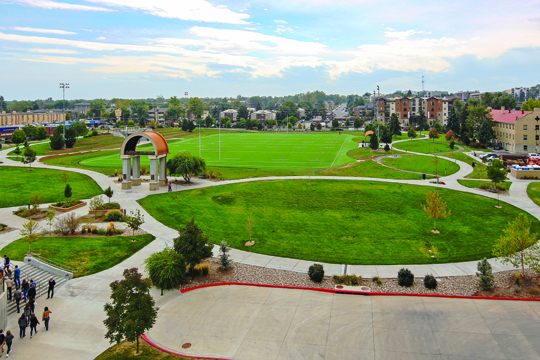
The view from the top of the City of Glendale’s High Altitude Training Center, shows the new turf field is complete and ready for competition. Photo by Justin Purdy
Josh Bertrand, veteran Supervisor of Glendale’s Public Works Department, overseer of installation, and a consummate wealth of knowledge on all things related to Infinity Park, says that in addition to meeting World Rugby regulations, added safety is the most important feature of the new field: “This surface will play better and last longer. It will give additional peace of mind to parents and active youth that use Infinity Park, while also protecting our divisional and professional athletes from injury.” The Pro-Play pad uses thermal bonded, cross-linked polyethylene foam that combines exceptional fall protection and drainage properties. The same product is used by international sporting federations that include field hockey, soccer, and Gaelic and American football, among others. World Rugby field regulations are stringent, and stipulate that high-impact contacts with the turf — like some of the “flying tackles” that make rugby so exciting for fans — are more easily absorbed. Glendale’s brand new, bright green surface will be safely absorbing player contact for years.
Co-hosted by Glendale and USA Rugby, October’s Women’s Sevens tournament brought the number of 2018-2019 tournament rounds to six, providing increased competition and promising more opportunity on the road to Tokyo in the summer of 2020. The HSBC USA Women’s Sevens Tournament at Infinity Park preceded other international stops on the tour, but once again demonstrated that Infinity Park remains the epicenter of American rugby at every level. With future stops at a total of six locations worldwide, including the U.S., Dubai, Australia, Japan, Canada, and France, it seems that the grass, real or synthetic, might actually be greener in Glendale.

by Mark Smiley | Oct 24, 2018 | Travel
Value Has Grown To $112 Million In Just 12 Months; Complaints Soar As Homes Become The Motel Next Door
by Glen Richardson

Highlands Hot: Unique and nostalgic homes have made short-term rentals in the Highlands neighborhood one of the hottest.
Valley neighborhoods are becoming more and more concerned about short-term rentals by homeowners through Airbnb and others. Their complaint is about the stream of homeowners, some new, renting the house next door for days or up to a few weeks. In neighborhoods such as the Highlands and the Golden Triangle many say the annoyance is progressively on the rise and threatening to escalate into citywide anger and fury.
That’s not a big surprise to Denver: Between January and July of this year the city received 112 complaints concerning primary residence, typically from local neighbors. Furthermore, residents contend that it’s unfair to expect neighbors to be the driving force behind legal compliance.
More than a year and a half after the City of Denver first tried to crack down on short-term rentals, the blossoming industry — buoyed by thousands of new homeowner hosts — has consistently stayed steps ahead of regulators. City records, combined with data provided by Denver-based analytics firm AirDNA reveals incessant problems with the city’s efforts to control a market that is bringing in more than $100 million a year.
Compliance Collapse
According to a study done and reported by BusinessDen — a website for local business news — less than half of the city’s known short-term rental landlords comply with licensing regulations. The bottom line, the study concludes: “The primary-residence requirement, designed to calm the fears of homeowners that their residential neighborhoods could become dominated by the motel next door has proven toothless and largely unenforceable.”
Denver’s Department of Excise & Licenses says the compliance rate is down due to the surge in people listing short-term rentals in the city. That’s because short-term rentals in Denver have grown in value to at least $112 million in the last 12 months. Moreover, it’s expected to top $200 million by 2021. AirDNA figures also show that properties in prime locations have annual cash flow topping six figures.
In only eight years San Francisco-based Airbnb’s initial plan to allow homeowners to host business travelers in a spare bedroom or to rent their family home to tourists while they’re out of town has made it a $25 billion c
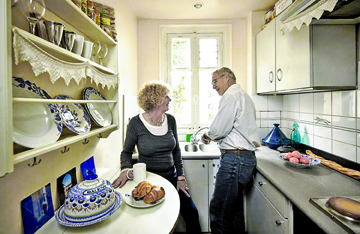
Home Away From Home: Price versus hotels and all the comforts of home have given a big boost in demand for short-term rentals.
ompany. The reason is simple: In comparison to prices for staying in a hotel the cost of a short-term rental is significantly lower. A short-term one-bedroom home in Denver often starts as low as $50 per night. With a hotel there’s typically a bed, a television and maybe a desk and chair. With short-term rentals travelers think they’ve never left home.
Seeking Visitor Dollars
Recognizing the economic benefit to the city coming from short-term rentals Visit Denver — the private, nonprofit association that markets metro Denver — touts on its website that the city has approved and is licensing short-term rentals. The site does urge visitors: “If you are visiting Denver and interested in renting a home, or part of a home, for fewer than 30 days, make sure that you rent from homeowner-hosts who are licensed by the City and County of Denver.”
Denver’s rules don’t allow property owners to run more than one Airbnb location other than a basement or carriage house. Nevertheless, AirDNA records indicate that at least 39% of the city’s properties are offered full-time year-round. More: Another 17% run more than one property. Furthermore, multi-listing hosts account for 40% of Denver’s rentals on Airbnb or about 2,000 listings.
Excise & Licenses has only a single compliance officer to handle 2,200 unlicensed rentals plus another 2,000 listings run by mult

Area Anxiety: Residents worry growth of short-term rentals in Denver’s most popular neighborhoods will change their character and transform the quality of life.
i-unit hosts (prohibited altogether under Denver law). The department’s six inspectors help with short-term rental issues but also deal with the city’s 180 other business licenses plus evolving industries such as marijuana. George Mayl, president of Inter-Neighborhood Cooperation (INC), says it best: “They’re undermanned and understaffed.”
Beginning April 1 of this year Airbnb started collecting Denver Lodger’s tax on sales of short-term lodging. The deal resulted in the city receiving $3 million while not forcing short-term rental property owners to send taxes to the city. During the same period Airbnb made $69 million from rentals. Based on AirDNA data, the city should have received more than $7 million.
Property Value Impact
There is a lot of talk among property owners about short-term rentals and their impact on real estate values. One of the most common questions is do short-term rentals increase the value of a particular residential property? Some homeowners feel it can add as much as 40% to the property value due to generating additional income.
Commercial and residential lenders, however, don’t agree. “A short-term rental has zero impact on value and should not be factored in when evaluating a property.”
Why? Regulations, they argue, can and often change overnight. Moreover they point out that permits are very different than a change in zoning which provides much greater certainty for future buyers of a property. Lenders conclusion: “Don’t buy into the hype that the income from a nightly rental will increase the value of the property.”

Quality Quotient: With 82% of Airbnb properties ranked at least 4.5, the online marketplace now publishes a Quality Score of every Denver short-term rental property.
Investor Influence
While lenders don’t see a benefit to short-term rentals professional real estate investors are far more optimistic. The financial benefit of an Airbnb property is clear to some investors: They can make more money from short-term rentals for the same reason vacationers typically spend more on lodging while traveling than they do on rent.
So how many professional real estate investors list properties on Airbnb? And how large are their businesses?
The best way to see whether there is a major trend of professional investors using Airbnb would be to see how many hosts rent out multiple properties on the site. In Denver at least numbers imply that 40% of listings are from multi-listing hosts indicative of probable professional investors. AirDNA, it should be pointed out, helps real estate investors make short-term rental property investment decisions. Thus the presence of professional investors has become controversial. The upshot is that Airbnb has become close-mouthed about disclosing information.
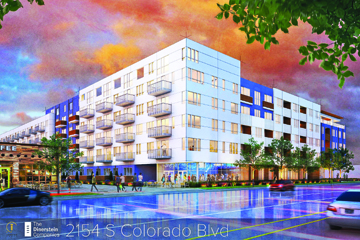
by Mark Smiley | Oct 24, 2018 | General Featured
Despite Colorado Center’s Classy Transit Connection New Adjacent Development Is Creating Corridor Sprawl
by Glen Richardson
“Ride the Rail to reduce traffic, air pollution and lower your stress.”
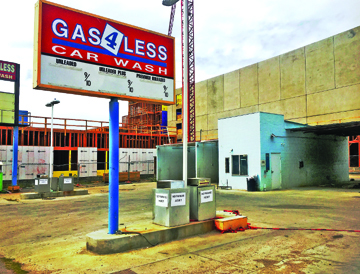
Washed Up: This self-service carwash site has sold for $767,000 and is the location of a proposed second apartment complex on Colorado Blvd. Construction is expected to start early next year with completion in 18 months.
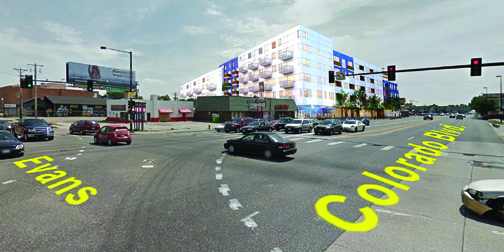
Traffic Trouble: The Millennium Colorado Station apartment complex under construction at Colorado Blvd. south of Evans is already creating traffic gridlock.
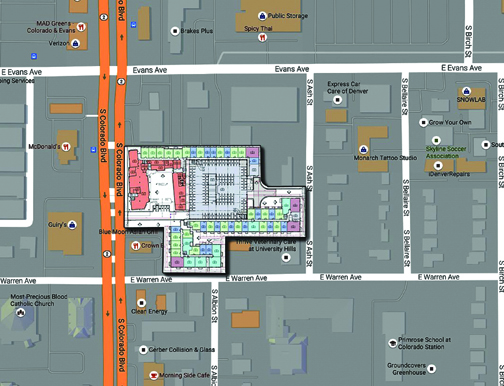
Millennial Map: Millennium Colorado Station’s massive development stretches along Colorado Blvd. to Warren Ave. and extends east from Colorado Blvd. to Ash St.
It is at the Colorado Center more than anywhere else that Denver seemed to be getting transit right. The 13-acre office, retail and entertainment complex features a Light Rail Station, FasTracks, CarShare and an $8 million bike-pedestrian bridge across I-25. As a transit-oriented development (TOD), the venture east of Colorado Blvd. and north of Evans Ave. initially seemed to be the Valley’s perfect transit project.
Wrong: TOD’s “evil brother,” transit-adjacent development (TAD) is literally taking over the adjoining neighborhood with a gargantuan development somewhat close to the Center’s transit, but not oriented to transit. Unfortunately in a city/county where developers have the final say, far more TADs than TODs are popping up along the Valley’s transit line. At nearly every station on any given line, you’ll find, at the least, clumps of new-fangled apartments and more often than not, fresh fast food chains and novel businesses.
Developer Deal
Being promoted as Millennium Colorado Station the new development is a colossal 580,000-sq.-ft., 350-unit apartment complex under construction a block south of Evans Ave. That’s in spite of the fact Colorado Station’s “General Development Plan” approved by the Denver Planning Board in 2006 clearly stated: “Development is to be concentrated closest to the station with a decrease in intensity in adjoining nearby neighborhoods.”
Exploding on the east side of the heavily traveled traffic thoroughfare, the project stretches south along Colorado Blvd. to Warren Ave. A moneymaking way for the developers to leverage the potential of transit-oriented developments without any of the costs, the sprawling project extends east from Colorado Blvd. to Ash St. Furthermore, the apartment complex is likely to charge a premium rate claiming it is along transit routes.
Houston-based The Dinerstein Companies ac

Colorado Center Class: The Master Planned transit-oriented Colorado Center will have this retail “Main Street” section plus a residential tower with 189 apartments, 80 lofts.
quired the old Criterion Shopping Center that later housed the Amish Furniture Gallery at 2154 S. Colorado Blvd. in the summer of 2017. The firm also purchased two adjacent homes on Ash St. where they began construction a year-ago September. Los Angeles real estate investment firm CityView is a partner in the project. South Broadway-based the Cuningham Group Architecture, who is designing the monster structure, describes it as, “a clean, modern design with a diverse mix of materials, including stucco, wood and metal.” Amenities will include a pool, wet deck, cabanas and outdoor kitchen. There will also be a fitness center, game room, bike room and pet spa. Completion of the project is anticipated for the second quarter of 2019.
About The Area
The median real estate price in the E. Evans and South Colorado Blvd. area is $1,264,045, which is more expensive than 99% of the neighborhoods in Colorado. The average monthly rental price is currently $1,925, based on NeighborhoodScout’s exclusive analysis. That’s higher rent than in 68.5% of the state’s neighborhoods.
Neighborhood real estate is primarily made up of small (studio to two bedroom) or large (four or more bedroom) single-family hom

Beauty & The Beast: Huge complex being crammed into area southeast of Colorado and Evans has replaced some businesses and homes while creating concerns for others.
es and apartment complex — high rise apartments. Many of the residential homes are older having been built between 1940-1969. A number of residences, however, were built from 2000 to the present.
The home and apartment vacancy rates are 10.7% in the area of E. Evans and S. Colorado Blvd. According to the NeighborhoodScout analysis, that rate is lower than 40.9% of the neighborhoods nationwide. The analysis indicates this is approximately near the middle for vacancies nationally.
About Center, Station
Centrally located between downtown and the Denver Technology Center, the premier transit oriented development has long been the home to a Dave & Busters plus Colorado Center Stadium 9 & IMAX.
There are now three Class A Office Buildings on the site. The recently finished 400,000-sq.-ft. Tower III completed the office component of the project. Following Denver-based Tryba Architects Master Plan, there is more than one million square feet of additional development that will include a 205,000-sq.-ft. residential tower that will house 189 apartments and 80 loft-style units plus a fitness center. Also in the plans is a new, 24-hour retail “Main Street” section.
Colorado Station is a side-platform light rail station operating as part of the E, F, and H Lines. Opened in November 2006 it now boasts 5,600 boardings and arrivals each day. Surveys show that 2% bike, 43% walk to transit and the balance drive to the station. There is an RTD Park-n-Ride lot two blocks east of Colorado Blvd. Located at 4401 E. Evans Ave. it holds approximately 400 cars.
What’s Ahead?
As cranes loom over the Colorado Blvd. skyline south of Evans Ave. residents and businesses are asking what will their neighborhoods become? The answer can likely be found surrounding RTD’s Evans Station, a light-rail station further west on Evans Ave. that opened in July 2000.

A TAD Too Much: Projects such as this gigantic complex going up on Colorado Blvd. south of Evans leverage the potential of transit-oriented developments without the costs.
There developers have requested permission to build up to eight floors at 2065 S. Cherokee St. in the Overland neighborhood. The 0.7-acre site is just northeast of the Evans Station, a site that has seen several apartment buildings sprout up. The latest zoning request would allow for a project similar to the Encore Evans Station, a 224-unit apartment complex that recently opened.
Some may see it as gentrification, but intensive development with new apartments crammed in alongside or replacing businesses and historic homes appears to be the future of light-rail in Denver. With the city’s encouragement, neighborhoods can expect more and more “evil brother,” transit-adjacent development (TAD) projects hopping on the “light rail gravy train.”
A TAD More Apartments Coming To Colorado Station
A developer has submitted plans for a second apartment complex adjacent to the massive 350-unit Millennium Colorado Station going up on Colorado Blvd. Developer Austin Schmidt wants to build a five-story apartment building that would be surrounded by the enormous project under construction.
The latest transit-adjacent development (TAD) is at the 0.28-acre site of a self-service carwash that has been on the E. Warren Ave. site for at least a dozen years. Schmidt and silent partners paid $767,000 for the lot.
Schmidt admits proximity to the light-rail station two blocks north is what attracted him to the site. The five-story project would have 52 studio, one and two bedroom units. Parking would be on the floor and basement levels. The developer expects to break ground early next year with construction completed within 18 months.

by Mark Smiley | Oct 24, 2018 | Editorials

Penfield Tate
In spring of 2011, the citizens of Denver in their infinite wisdom decided to elect the unintelligent but gregarious Michael Hancock who as The Denver Post stated, had a “feel good story” rising from poverty to become the plaything of Green Valley Ranch developer Pat Hamill who owns Hancock lock, stock, and barrel along with his fellow crony capitalists at Colorado Concern. Of course The Denver Post never revealed who was actually running Hancock as it had become, as the only major paper in the city, as corrupt as the city government itself.
Hancock barely made the 2011 runoff beating out James Mejia by only 1,491 votes for the last spot behind first round leader Chris Roemer. Just think only 1,491 votes and the race would have been between two highly qualified and experienced candidates either of whom would have run Denver a multitude of times better than Hancock. For the last eight years high density developers and the Brownstein law firm have run and raped the city for fun and profit while Hancock has spent his time working out in gyms and chasing skirts.
Four years ago everyone realized what an awful mayor Hancock was but no credible candidate arose to run against him due in large part to the massive fundraising advantage Hancock had over anyone who would run against him. For a while it looked like 2015 would repeat itself with Hancock running essentially unopposed.
But over the last 30 days two highly credible candidates, Penfield Tate and Lisa Calderon, have thrown their hats into the ring for office of mayor of the City and County of Denver which will give Denver real choices.
Penfield Tate III is 62-years-old and an attorney with the national law

Lisa Calderon
firm of Kutak Rock. He was a state representative from 1997 to 2001 and state senator from 2002 to 2003. He represented northeast Denver which is the base of power for Mayor Hancock. He knows what he is up against having run for mayor in 2002, getting beaten out by John Hickenlooper.
He correctly points out how the rapid growth of Denver has been grossly mismanaged by the Hancock administration. The last eight years with all the wealth pouring into the city should have been Denver’s Golden Age, instead it’s been an unmitigated disaster for everyone but developers.
Tate has declared: “Development is out of sync with neighborhoods, disrupting the quality of neighborhoods. It’s imperiling open space and having an impact on parks. It’s driving gentrification. It’s impacting small businesses that are . . . getting driven out of neighborhoods. It is impacting affordable housing.” We could not have articulated some of the major problems of the Hancock administration better.
Lisa Calderon is a longtime community activist from north Denver and presently the co-chair of the Colorado Latino Forum — Denver chapter. Her parents were an African-American and a Latino. She has a law degree from the University of Colorado, Boulder, as well as a doctorate in education from CU Denver.
She has been a advocate against the treatment of prisoners at the Denver jail. She has held rallies against Michael Hancock’s harassment of and lying about his relationship with Denver Police Detective Leslie Branch Wise. She recently sued the City and County of Denver for canceling a contract to run a re-entry program for former inmates based on, she alleges, her criticism of the mayor and his harassment of Leslie Branch Wise.
She believes that the city is at a critical juncture: “So, I kept waiting for the candidate to emerge that I would support, who represented my values and my concerns about affordable housing and women’s issues, and concerns about the cultural preservation in our city. And I realized, I was waiting for me.”
Her platform centers around affordable housing, “resident-led” development, decentralizing the mayor’s office, and women and workers.
When asked how affordable housing and “resident-led” development mesh she stated:”We need to look at what does each community need in their neighborhood,” she said. “I can tell you right now I don’t need a big behemoth building shadowing over all of the other units, but there is a way to build for density that still takes into account community.”
She went on to note: “There are ways to do density that really centers a community in it, rather than a developer’s idea about cramming so many people in there.”
Eighteenth century diplomat and philosopher Joseph de Maitre declared that “in a democracy people get the leaders they deserve.” It is hard to fathom that anybody deserves a sexual predator and corrupt mayor like Michael Hancock, but we will find out next spring. Hancock has raised $700,000 from the worst of the worst in Denver, but no amount of money can scrub clean the permanent stains he has made across the city. We will have a choice next year in Denver and it can only be hoped that we choose wisely.




















